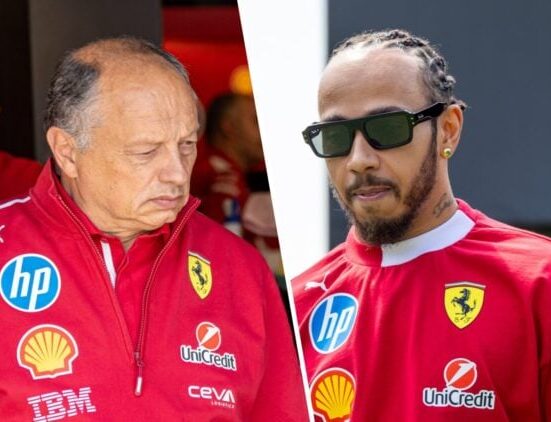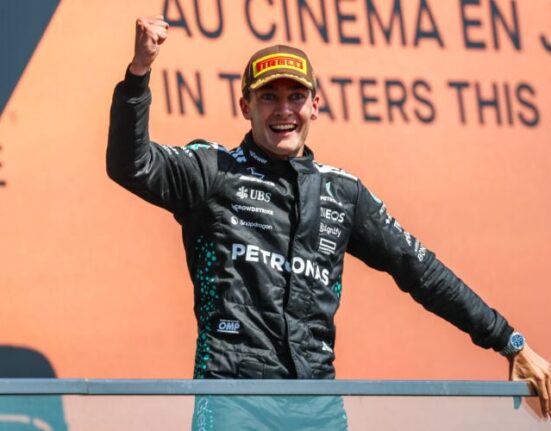The 2025 Formula 1 season marks the last year of the current technical regulations but that has not stopped the FIA and F1 from changing the rules for the new term.
F1 will undergo, arguably, its largest-ever rule change next year with new chassis and power unit regulations. Not since the 2014 campaign when the pinnacle of motorsport introduced turbo-charged 1.6L V6 power units has F1 modified the technical regulations to such a level.
The FIA and F1 have come together to agree some rule changes for the new season, though. Teams have until the Spanish Grand Prix in June to produce new front wings, for example, as the FIA clamps down on flexi front wings. But that is not the only rule change affecting 2025.

Karun Chandhok and David Croft disagree about F1 dropping the fastest lap bonus point
Formula 1 has decided to drop the one bonus point awarded to the driver among the top 10 finishers who sets the fastest lap in a Grand Prix from the 2025 season. The rule was in force since 2019 and meant the winning driver could take a maximum of 26 points in a Grand Prix.
Teams often tended to rig the system and snatch the fastest lap on the final lap of the Grand Prix if they had a large enough gap to the car directly behind to make an extra, unforced and unneeded pit stop. It was also not always drivers in the top 10 who pitted for the fastest lap.
READ MORE: The seven F1 rule changes you need to know about for the 2025 season
So, Karun Chandhok believes F1 and the FIA were right to axe the bonus point for setting the fastest lap from the 2025 season. Yet David Croft disagrees as Sky Sports’ F1 commentator is of the belief that F1 and the FIA should have extended the bonus point rule for every driver.
Chandhok said on Sky Sports F1 (27/02, 09:58): “I think that’s good. We had a go, it made a bit of a story on some occasions, but it turned out to be a bit of a nonsense basically where anyone who had a free pit stop and a gap would take the pit stop and take the fastest lap.
“That’s not a true reflection of somebody who’s actually done the fastest lap on merit. It’s just someone who had a free pit stop.”
To which, Croft replied: “I’m going to disagree with you cos I actually don’t agree with you. I say keep the fastest lap bonus point but make it available to all 20 drivers or whoever is still running. So, you don’t have to be in the top 10 to get the fastest lap bonus point.”
But Croft’s suggestion raised another issue for Chandhok, who added: “But then whoever is running last on the road in every race will stop for a set of soft tyres and take the point.
“You can’t give the person who finishes in 20th [place] a point when the person who finishes in 11th gets zero. That’s not fair.”
Teams rigging the system left F1 with no choice but to drop the fastest lap bonus point

While Croft and others may disagree with Chandhok’s view, Formula 1 teams left F1 and the FIA with no choice but to scrap the fastest lap bonus point by rigging the system. The bonus point also rarely made a true difference for the F1 drivers’ and constructors’ championships.
READ MORE: Everything you need to know about F1’s 2026 engine and chassis regulations
The bonus point, theoretically, could have impacted the 2024 drivers’ championship if Lando Norris won out and set the fastest lap in every round after the Singapore Grand Prix. But Red Bull driver Max Verstappen would ultimately beat the McLaren pilot to the title by 63 points.
Daniel Ricciardo stole the fastest lap from Norris in the Singapore GP after Visa Cash App RB (now called Racing Bulls) pitted the Australian at the end of what proved to be his final race in F1. Ferrari’s Charles Leclerc stole the fastest lap from Norris in the Mexico City GP, as well.
Like Ricciardo in Singapore, Leclerc pitted at the end of the Mexico City Grand Prix to set the fastest lap on the final lap to support Ferrari’s constructors’ championship challenge against McLaren. Leclerc pitted after losing P2 to Norris as he had a big enough gap to fourth place.










Leave feedback about this